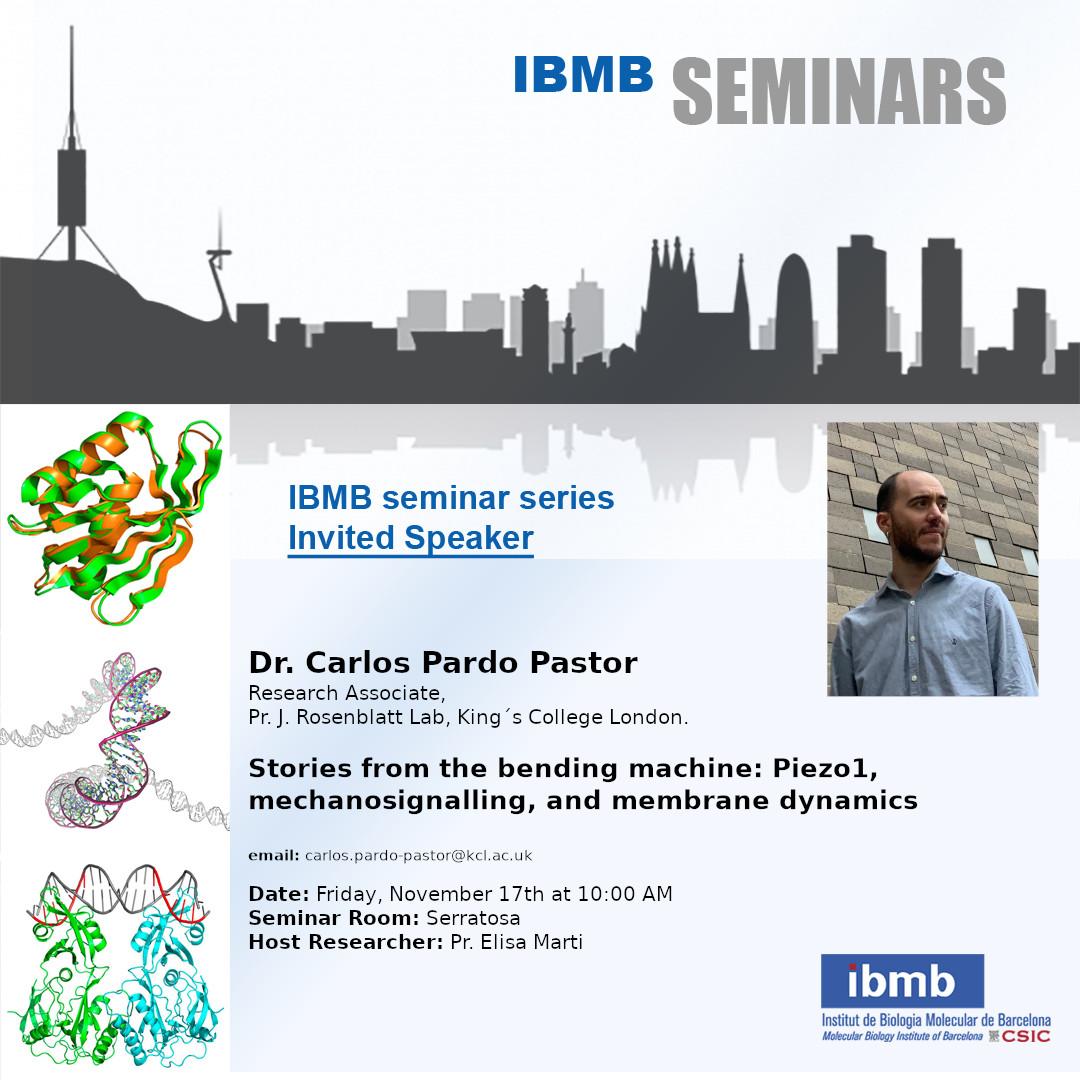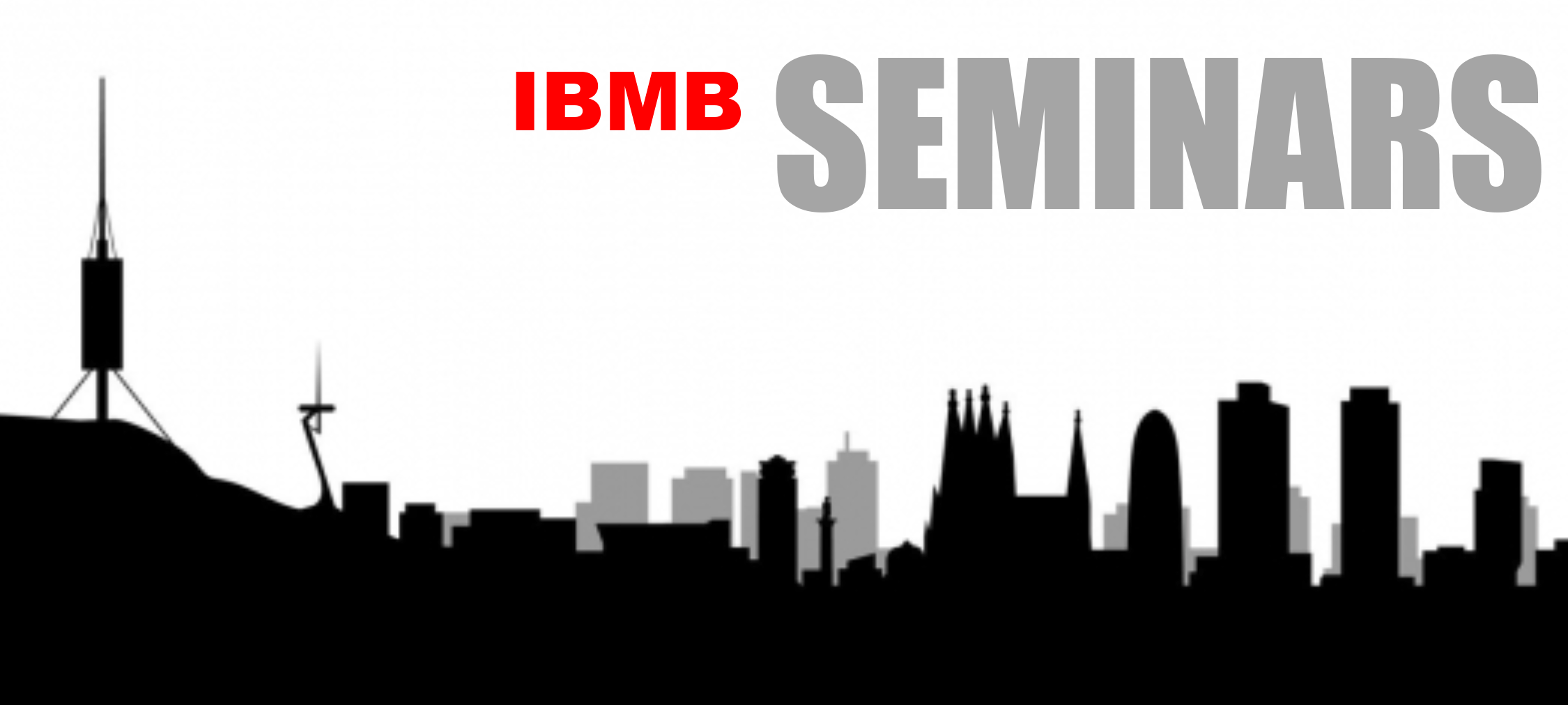Date: Friday, April 12th | Felix Serratosa room | 12|04|2024 Time: 10:00 AM Speaker: Valerio Di Domenico Guerin…
IBMB Seminar, Friday, November 17th 10:00 AM | Dr. CARLOS PARDO PASTOR
Date: Friday, November 17th | Serratosa | 17|11|2023
Time: 10:00 AM
Speaker: Dr. Carlos Pardo Pastor
Research Associate,
Pr. J. Rosenblatt Lab, King´s College London.
Title: “Stories from the bending machine: Piezo1, mechanosignalling, and membrane dynamics“
Seminar Room: Serratosa
Host researcher: Pr. Elisa Marti
Keywords: Piezo1, Endocytosis, Adhesion, Mechanosignalling, Chemoresistance
Abstract:
Emerging data from multiple fields suggest that mechanical forces impact cell function differentially during homeostasis versus disease, depending on the type of force and its magnitude. I will reveal new data showing how mechanical force impacts a process essential to cell signalling, clathrin-mediated endocytosis (CME). While the canonical models of CME show clathrin triskelia can bend the plasma membrane to generate vesicles, cells under tension flatten the membrane and underlying clathrin into flat plaques that prevent endocytic vesicle formation but enhance cell-matrix adhesion. Yet, despite ~50 years of intensive study of CME, how cells regulate clathrin plaque assembly and disassembly into vesicles has remained mysterious. I found that the stretch-activated ion channel Piezo1 couples mechanical signals to EGFR CME to yield completely different signalling, consistent with a regenerative, neoplastic outcome (Pardo-Pastor and Rosenblatt, Science Advances, 2023). Given that this new Piezo1-EGFR signalling axis is independent of tyrosine phosphorylation, these findings may explain why many cancers are resistant to current tyrosine kinase inhibitors and offer new therapeutical options. Additional work reveals that Piezo1 promotes endocytosis by curving the membrane at clathrin plaque edges (unpublished). Thus, Piezo1 appears to be the long-sought mechanoregulator of membrane and clathrin plaque bending to initiate CME.
Brief narrative biosketch:
My research focuses on the mechanical control of cell division, migration, and death and how ion channels act to translate mechanical forces into chemical signals. During my PhD with Prof. Miguel A. Valverde at Universitat Pompeu Fabra, I discovered that the mechanosensitive ion channel Piezo1 senses confinement to adapt cell migration modes (Hung, et al., Cell Reports, 2016) and that Piezo2 senses rigidity to trigger invasion and proliferation of brain cancer cells (Pardo-Pastor, et al., PNAS, 2018). During my postdoc with Prof. Jody Rosenblatt’s at King’s College London, funded by Human Frontiers and Marie Curie postdoctoral fellowships, I studied how Piezo1 regulates epithelial cell turnover depending on cell density. My work has uncovered new roles for Piezo1 in clathrin-mediated endocytosis and signalling. I first identified that mechanical activation of EGFR signalling requires Piezo1 and initiates regenerative/oncogenic signalling distinct to canonical ligand-triggered homeostatic functions. Importantly, this axis requires serine phosphorylation, rather than canonical EGFR tyrosine phosphorylation and kinase activity, suggesting a mechanism of resistance to tyrosine kinase inhibitors and an alternative option for targeted therapy. While investigating the mechanism driving this response, I found that Piezo1 plays a fundamental role in initiating membrane curvature required for clathrin-coated endocytic vesicle formation. These findings form the basis of my proposed work as an independent researcher, combining bioengineering, quantitative microscopy, cell and molecular biology, and electrophysiology to study how cells sense and adapt to mechanical signals from the environment impacting development, homeostasis, and disease.


